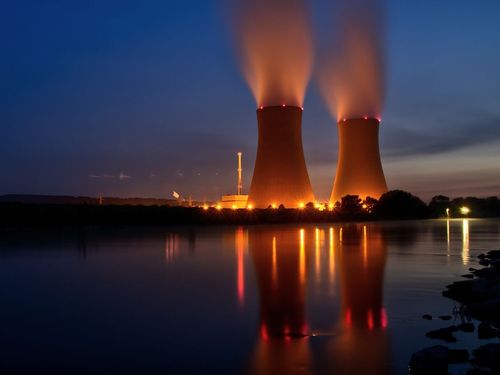The International Atomic Energy Agency (IAEA), the UN’s nuclear watchdog, has recently expressed serious concerns over the deteriorating security conditions at the Zaporizhzhia nuclear power plant in Ukraine.
This facility, Europe's largest nuclear power plant, has become a focal point of international attention due to the potential catastrophic consequences of any security breaches. The plant’s safety has become a critical issue as the conflict intensifies, putting the world on edge about the potential for a nuclear disaster.
Escalating Concerns Over Nuclear Safety
The IAEA has been monitoring the Zaporizhzhia nuclear power plant closely, particularly after several incidents involving military activity near the facility. On August 18, 2024, the agency reported that a drone strike had occurred just outside the plant’s perimeter, damaging a road between two of the facility’s main gates. The strike happened alarmingly close to crucial infrastructure, including cooling water ponds and a key power line.
Rafael Mariano Grossi, the Director General of the IAEA, has been vocal about the escalating dangers. He stated, "Yet again, we see an escalation of the nuclear safety and security dangers facing the Zaporizhzhia Nuclear Power Plant. I remain extremely concerned and reiterate my call for maximum restraint from all sides."
The Importance of Zaporizhzhia Nuclear Power Plant
The Zaporizhzhia nuclear power plant is not only a vital source of electricity for Ukraine but also one of the largest nuclear facilities in the world. It houses six nuclear reactors and plays a crucial role in the country's energy supply.
However, since the plant came under Russian control, its operational safety has been increasingly compromised. The IAEA’s safety in Zaporizhzhia has been a constant concern, with repeated calls for demilitarization of the area around the plant to prevent any further escalation.
The plant’s location on the frontlines of the conflict makes it particularly vulnerable. The recent drone strike is just one example of how the conflict is threatening the integrity of the nuclear facility. The IAEA has warned that any damage to the plant’s infrastructure could lead to a radiation leak, potentially causing a disaster on a scale similar to the Chernobyl disaster in 1986.
IAEA’s Efforts to Safeguard the Plant
The IAEA has been proactive in its efforts to mitigate the risks at the Zaporizhzhia plant. The agency established the IAEA Support and Assistance Mission to Zaporizhzhia (ISAMZ) in September 2022, with the goal of providing technical support and monitoring the plant’s safety conditions.
Grossi has also proposed a set of five concrete principles aimed at protecting the plant, including ensuring the plant is not used as a base for military operations and that the integrity of all essential systems is maintained.
The Broader Implications
The deteriorating safety at the Zaporizhzhia nuclear power plant has far-reaching implications, not just for Ukraine but for the entire world. A nuclear disaster at the plant would have catastrophic consequences, potentially spreading radioactive contamination across Europe and beyond.
The United Nations' nuclear watchdog has been working tirelessly to ensure that the plant's safety protocols are maintained despite the challenging circumstances. However, the increasing frequency of such incidents has made it clear that the situation is becoming increasingly untenable.
Wrapping Up
The situation at the Zaporizhzhia Nuclear Power Plant continues to be a source of grave concern for the international community. As military activities intensify in the region, the risks of a nuclear incident increase, with potentially catastrophic consequences. The IAEA continues to call for both Russia and Ukraine to adhere strictly to security guidelines to prevent any further escalation.

